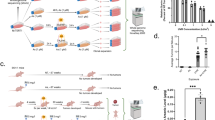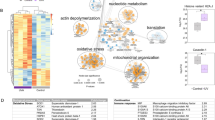Abstract
Ultraviolet A (UVA, 315–400 nm), constituting about 95% of ultraviolet irradiation in natural sunlight, represents a major environmental challenge to the skin and is clearly associated with human skin cancer. It has proven difficult to show direct actions of UVA as a carcinogen in human cells. Here, we demonstrate that chronic UVA exposures at environmentally relevant doses in vitro can induce malignant transformation of human keratinocytes associated with acquired apoptotic resistance. As evidence of carcinogenic transformation, UVA-long-treated (24 J/cm2 once/week for 18 weeks) HaCaT (ULTH) cells showed increased secretion of matrix metalloproteinase (MMP-9), overexpression of keratin 13, altered morphology and anchorage-independent growth. Malignant transformation was established by the production of aggressive squamous cell carcinomas after inoculation of ULTH cells into nude mice (NCr-nu). ULTH cells were resistant to apoptosis induced not only by UVA but also by UVB and arsenite, two other human skin carcinogens. ULTH cells also became resistant to apoptosis induced by etoposide, staurosporine and doxorubicin hydrochloride. Elevated phosphorylation of protein kinase B (PKB, also called AKT) and reduced expression of phosphatase and tensin homologue deleted on chromosome 10 (PTEN) were detected in ULTH cells. The resistance of ULTH cells to UVA-induced apoptosis was reversed by either inhibition of phosphatidylinositol 3-kinase (PI-3K) or adenovirus expression of PTEN or dominant negative AKT. These data indicate that UVA has carcinogenic potential in human keratinocytes and that the increased AKT signaling and decreased PTEN expression may contribute to this malignant transformation. Further comparisons between the transformed ULTH and control cells should lead to a better understanding of the mechanism of UVA carcinogenesis and may help identify biomarkers for UVA-induced skin malignancies.
This is a preview of subscription content, access via your institution
Access options
Subscribe to this journal
Receive 50 print issues and online access
$259.00 per year
only $5.18 per issue
Buy this article
- Purchase on Springer Link
- Instant access to full article PDF
Prices may be subject to local taxes which are calculated during checkout







Similar content being viewed by others
Abbreviations
- AKT:
-
Also called PKB^Protein kinase B
- BCC:
-
Basal cell carcinoma
- DN-AKT:
-
Dominant AKT
- EV:
-
Empty vector
- Control (C):
-
Control normal HaCaT cells
- MMP-9:
-
Matrix metalloproteinase-9
- PI-3K:
-
Phosphatidylinositol 3-kinase
- PTEN:
-
Phosphatase and tensin homologue deleted on chromosome 10
- SCC:
-
Squamous cell carcinoma
- UVA:
-
Ultraviolet A (315–400 nm)
- UVB:
-
Ultraviolet B (280–315 nm)
- ULTH:
-
UVA-long-term treated HaCaT cells
References
Achanzar WE, Diwan BA, Liu J, Quader ST, Webber MM, Waalkes MP . (2001). Cancer Res 61: 455–458.
Agar NS, Halliday GM, Barnetson RS, Ananthaswamy HN, Wheeler M, Jones AM . (2004). Proc Natl Acad Sci USA 101: 4954–4959.
Autier P, Dore JF, Negrier S, Lienard D, Panizzon R, Lejeune FJ et al. (1999). J Natl Cancer Inst 91: 1304–1309.
Backman SA, Ghazarian D, So K, Sanchez O, Wagner KU, Hennighausen L et al. (2004). Proc Natl Acad Sci USA 101: 1725–1730.
Bernhard EJ, Muschel RJ, Hughes EN . (1990). Cancer Res 50: 3872–3877.
Borchers AH, Steinbauer H, Schafer BS, Kramer M, Bowden GT, Fusenig NE . (1997). Mol Carcinog 19: 258–266.
Boukamp P, Petrussevska RT, Breitkreutz D, Hornung J, Markham A, Fusenig NE . (1988). J Cell Biol 106: 761–771.
Bruls WA, Slaper H, van der Leun JC, Berrens L . (1984). Photochem Photobiol 40: 485–494.
Catani MV, Rossi A, Costanzo A, Sabatini S, Levrero M, Melino G et al. (2001). Biochem J 356: 77–85.
Clarke PG . (1990). Anat Embryol (Berlin) 181: 195–213.
Cokkinides VE, Johnston-Davis K, Weinstock M, O'Connell MC, Kalsbeek W, Thun MJ et al. (2001). Prev Med 33: 141–151.
Cox AD, Der CJ . (1994). Methods Enzymol 238: 277–294.
Dahle J, Kvam E . (2003). Cancer Res 63: 1464–1469.
Davies MA, Kim SJ, Parikh NU, Dong Z, Bucana CD, Gallick GE . (2002). Clin Cancer Res 8: 1904–1914.
de Gruijl FR, Sterenborg HJ, Forbes PD, Davies RE, Cole C, Kelfkens G et al. (1993). Cancer Res 53: 53–60.
Fujio Y, Guo K, Mano T, Mitsuuchi Y, Testa JR, Walsh K . (1999). Mol Cell Biol 19: 5073–5082.
Gasparro FP . (2000). Environ Health Perspect 108 (Suppl 1): 71–78.
Geller AC, Colditz G, Oliveria S, Emmons K, Jorgensen C, Aweh GN et al. (2002). Pediatrics 109: 1009–1014.
He YY, Huang JL, Chignell CF . (2004). J Biol Chem 279: 53867–53874.
He YY, Huang JL, Gentry JB, Chignell CF . (2003a). J Biol Chem 278: 42457–42465.
He YY, Huang JL, Ramirez DC, Chignell CF . (2003b). J Biol Chem 278: 8058–8064.
Huang J, Kontos CD . (2002). J Biol Chem 277: 10760–10766.
Jeanmougin M, Civatte J . (1987). Ann Dermatol Venereol 114: 671–676.
Johnstone RW, Ruefli AA, Lowe SW . (2002). Cell 108: 153–164.
Juarez J, Clayman G, Nakajima M, Tanabe KK, Saya H, Nicolson GL et al. (1993). Int J Cancer 55: 10–18.
Kerr JF, Wyllie AH, Currie AR . (1972). Br J Cancer 26: 239–257.
Minaguchi T, Mori T, Kanamori Y, Matsushima M, Yoshikawa H, Taketani Y et al. (1999). Cancer Res 59: 6063–6067.
Noonan FP, Recio JA, Takayama H, Duray P, Anver MR, Rush WL et al. (2001). Nature 413: 271–272.
Phillipson RP, Tobi SE, Morris JA, McMillan TJ . (2002). Free Radic Biol Med 32: 474–480.
Pi J, He Y, Bortner C, Huang J, Liu J, Zhou T et al. (2005). Int J Cancer 116: 20–26.
Rossman TG, Uddin AN, Burns FJ, Bosland MC . (2001). Toxicol Appl Pharmacol 176: 64–71.
Segrelles C, Ruiz S, Perez P, Murga C, Santos M, Budunova IV et al. (2002). Oncogene 21: 53–64.
Setlow RB . (1974). Proc Natl Acad Sci USA 71: 3363–3366.
Setlow RB, Grist E, Thompson K, Woodhead AD . (1993). Proc Natl Acad Sci USA 90: 6666–6670.
Slaga TJ, DiGiovanni J, Winberg LD, Budunova IV . (1995). Prog Clin Biol Res 391: 1–20.
Stambolic V, Suzuki A, de la Pompa JL, Brothers GM, Mirtsos C, Sasaki T et al. (1998). Cell 95: 29–39.
Suzuki A, Itami S, Ohishi M, Hamada K, Inoue T, Komazawa N et al. (2003). Cancer Res 63: 674–681.
Thompson CB . (1995). Science 267: 1456–1462.
Warren BS, Naylor MF, Winberg LD, Yoshimi N, Volpe JP, Gimenez-Conti I et al. (1993). Proc Soc Exp Biol Med 202: 9–15.
Wyllie AH, Kerr JF, Currie AR . (1980). Int Rev Cytol 68: 251–306.
Acknowledgements
This research was supported by the Intramural Research Program of the NIH, NIEHS and NCI. The research has been funded in part with Federal funds from the National Cancer Institute, National Institutes of Health, under contract # NO1-CO-12400. The content of this publication does not necessarily reflect the views of the Department of Health and Human Services, nor does mention of trade names, commercial products, or organizations imply endorsement by the US Government. We thank Dr Jerrold M Ward for assistance with microphotography. The authors also wish to thank Drs Carol Trempus, Jie Liu and Ann Motten for critical reading of the manuscript.
Author information
Authors and Affiliations
Corresponding author
Rights and permissions
About this article
Cite this article
He, YY., Pi, J., Huang, JL. et al. Chronic UVA irradiation of human HaCaT keratinocytes induces malignant transformation associated with acquired apoptotic resistance. Oncogene 25, 3680–3688 (2006). https://doi.org/10.1038/sj.onc.1209384
Received:
Revised:
Accepted:
Published:
Issue Date:
DOI: https://doi.org/10.1038/sj.onc.1209384
Keywords
This article is cited by
-
MicroRNA31 and MMP-1 contribute to the differentiated pathway of invasion -with enhanced epithelial-to-mesenchymal transition- in squamous cell carcinoma of the skin
Archives of Dermatological Research (2021)
-
Development and Characterization of a Novel in vitro Progression Model for UVB-Induced Skin Carcinogenesis
Scientific Reports (2015)
-
Role of AMPK in UVB-induced DNA damage repair and growth control
Oncogene (2013)
-
UVA Induces Lesions Resembling Seborrheic Keratoses in Mice with Keratinocyte-Specific PTEN Downregulation
Journal of Investigative Dermatology (2011)
-
Preliminary assessment of the risks associated with solar ultraviolet-A exposure
Radiation and Environmental Biophysics (2011)



